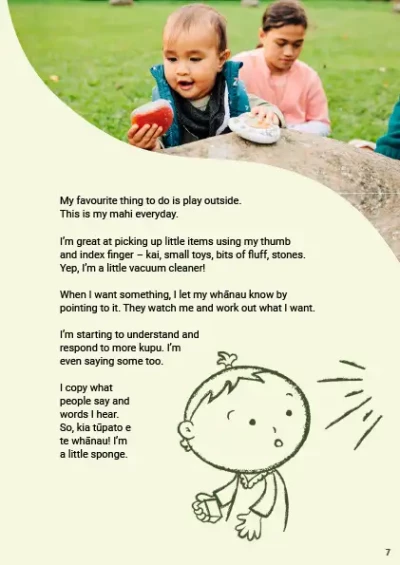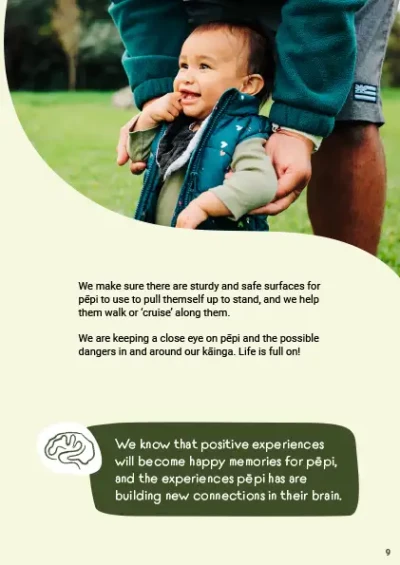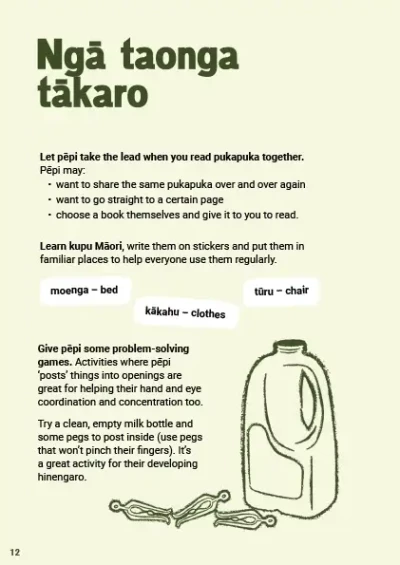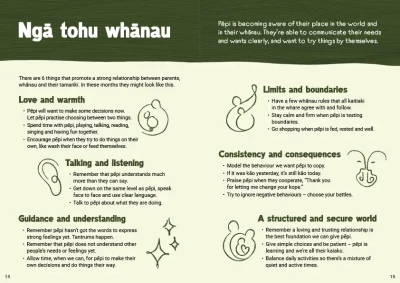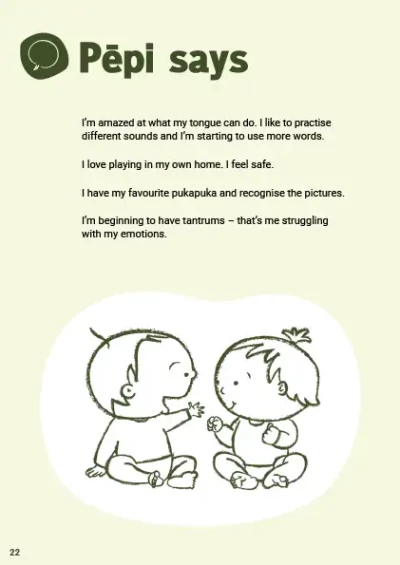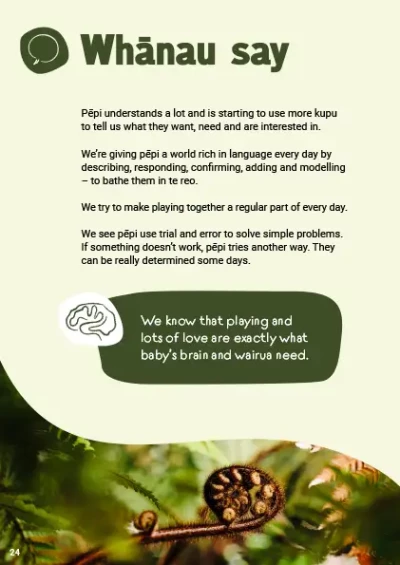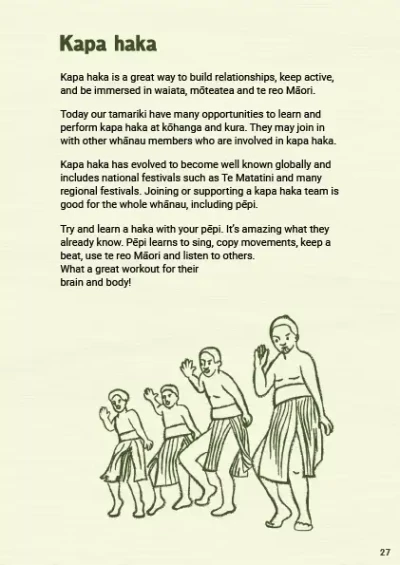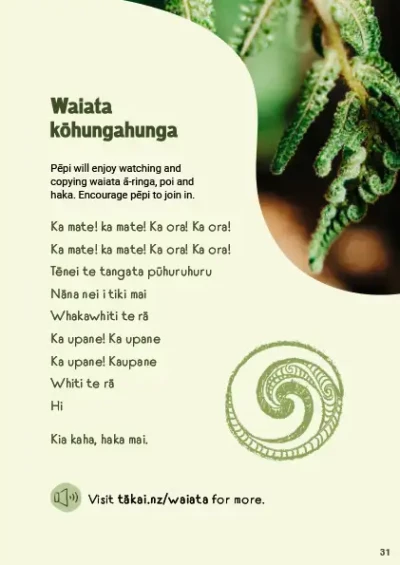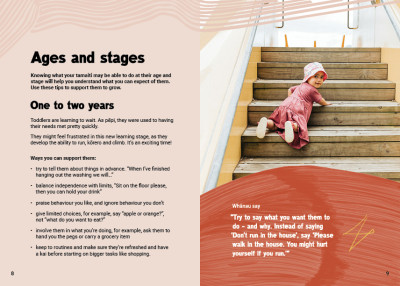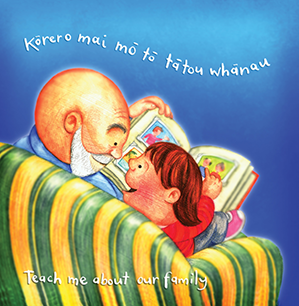
Play and learning using Tākai resources
Tākai resources you can use with whānau to explore play and learning with their child.
The value of love and time together
Playing is a child’s ‘work’ – it’s how they learn, and it’s important for their brain development. In the Whakatipu booklet Te Pihinga 3, ‘Love and warmth’ on page 14 reminds whānau of the value in spending 'time with pēpi, playing, talking, reading, singing and having fun together.'
Some other places in Te Pihinga 3 to explore with whānau are:
- Page 7 — ‘Pēpi says: When I want something, I let my whānau know by pointing to it. They watch me and work out what I want.'
- Page 9 — ‘Whānau say: We know that positive experiences will become happy memories for pēpi, and the experiences pēpi has are building new connections in their brain.'
- Page 12 — ‘Ngā taonga tākaro : Let pēpi take the lead when you read pukapuka together.'
- Page 22 — ‘Pēpi says: I love playing in my own home. I feel safe.'
- Page 24 — ‘Whānau say: We try to make playing together a regular part of every day.'
- Page 27 — ‘ Kaitiaki pēpi: Try and learn a haka with your pēpi. It’s amazing what they already know.'
- Page 31 – ‘Waiata kōhungahunga: Pēpi will enjoy watching and copying waiata ā-ringa , poi and haka. Encourage pēpi to join in.'
Connecting through positivity and activity
The Thinking about Parenting booklet, page 6, reminds parents to focus on the positive: ‘Try and say five positive things for every negative one!’
In the World of Under-fives booklet, the messages on pages 4 and 6 encourage parents to use everyday activities to connect with their children.
- ‘Try to do something they like with them every day’ (page 4).
- ‘Involve them in what you’re doing. Ask them to hand you the pegs or get the mail’ (page 6).
Conversation ideas
Helpful resources for whānau
-
The value of play<
The value of playSimple information about the value of play and activities to develop skills, including playing with others.
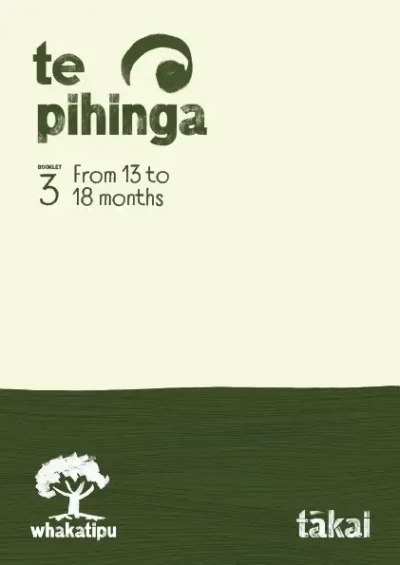 pdf 11 MB
pdf 11 MB
